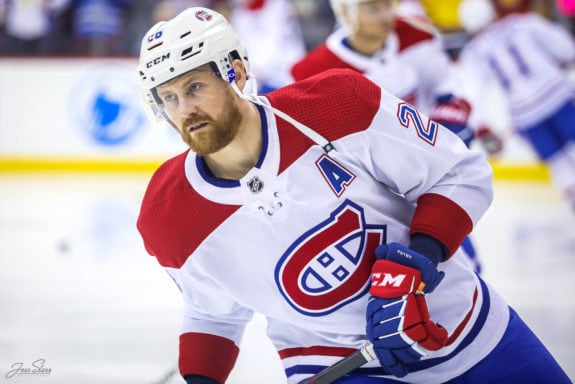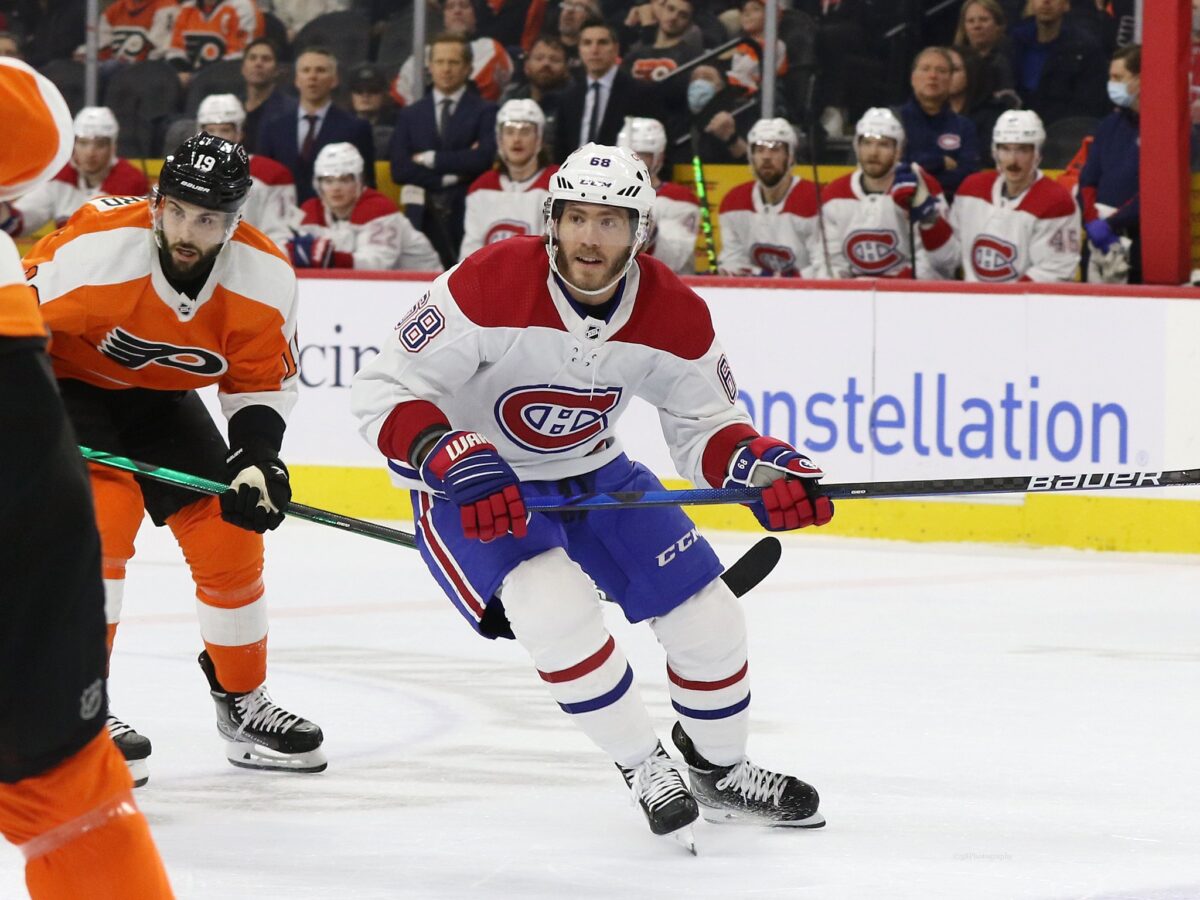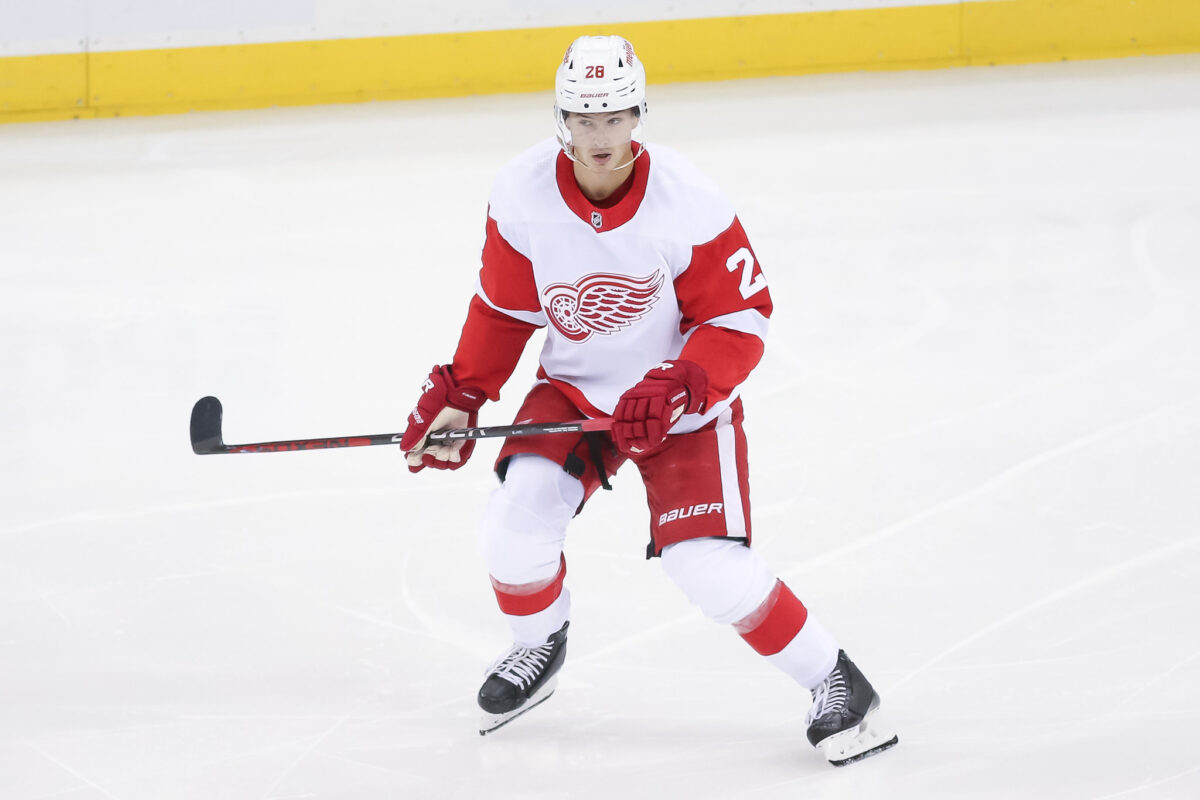All else being equal, the Montreal Canadiens should probably prefer Mike Hoffman over Tanner Pearson. A lot of what matters even is equal, as both players have single years left on their deals and took up roster spots up front, preventing the Habs from devoting space to their younger players. That’s where the similarities end, for better or worse.
Revisiting the Jeff Petry Trade
For worse, Hoffman, who got traded away in the initial Jeff Petry trade from this past offseason, has a history of more offensive success. For better, Pearson has a cap hit that’s lower by $1.25 million. However, to be fair, the Canadiens did retain $2,343,750 of Petry’s hit when they retraded him to the Detroit Red Wings a few weeks later.
Related: Canadiens Reacquire Petry Shrewdly Shifting Logjam to Defense
Admittedly there’s also the fact teams are limited to three retained-salary spots per season. The Canadiens used up one in that subsequent Petry trade. So, now that the Canadiens have two (Joel Edmundson), they’re at something at a disadvantage in their rebuilding efforts. That can’t nor should it be denied.

That means, when it comes to the worst current Canadiens contracts, the Canadiens are handcuffed getting rid of them, adversely impacting how the trade deadline goes. It all begs the question, did the Canadiens do themselves a disservice making this specific series of moves, dating back to early August 2023?
Hughes Hits Home Run by Trading Hoffman
Remember, the reason the Canadiens presumably traded Hoffman was to open up a roster spot for Jesse Ylonen, for example. Now that Pearson’s been acquired in his place, that door’s been slammed shut in that regard for all intents and purposes. So, what did the Habs and general manager Kent Hughes gain, really?

In the initial Petry trade, the Canadiens dealt away Hoffman and Rem Pitlick (who likely wouldn’t have made the roster anyway). They gained a 2025 second-round pick, forward prospect Nathan Legare and goalie Casey DeSmith. When they traded Petry to the Red Wings, they retained the aforementioned $2-plus million of his salary, getting defenseman Gustav Lindstrom and a conditional 2025 fourth-round pick in exchange.
The Canadiens of course then traded DeSmith to the Vancouver Canucks to get Pearson and a 2025 third-round pick. So, all in all, the Habs are “up” Legare, Lindstrom and the additional picks they’ve gotten (second, third, fourth in 2025), while arguably in neutral territory looking at it simply from a roster-space standpoint up front.
Canadiens Net Positive with Lindstrom, Pearson in Picture
Some may point to the picks as little more than lottery tickets with about as much chance at panning out. However, truth be told, the second and third-round ones historically have 44% and 30% shots respectively at playing at least 50 career games. In any case, to a degree, it comes down to Lindstrom (as Legare’s certainty of making the NHL has taken a hit based on his lack success at the American Hockey League level up to now). He and Pitlick are washes.

Hughes did say the Canadiens’ pro scouts see Lindstrom as having reached 70% of his potential. It’s not a bad sign, considering he’s averaged 15:37 in ice time up to now as a 25-year-old. However, keep in mind, he peaked at 16:32 in his rookie season. He effectively dropped every season since, playing 14:10 on average in just 36 games in 2022-23.
So, on the fair chance Lindstrom doesn’t develop as hoped? Was there a point in all this or was it an exercise in futility? The fact is, Hoffman wasn’t working out, especially not as the boon to the power play ex-general manager Marc Bergevin likely hoped he would become when he signed the forward two years ago. The power play has dropped from 19.2% in 2020-21 before Hoffman got acquired to 13.7% in 2021-22 and 16.1% in 2022-23. He had to go.
Hoffman vs. Pearson
Ultimately, in Hoffman you have a forward who needs top-six ice time to be effective based on his skill set. In Pearson, you may get less production, but someone with more of a two-way game, who can be effective in a bottom-six role. Granted, for Pearson to maximize his trade value for the purposes of a mid-season trade, you’d give him top-six ice time as well.
However, Pearson is unlikely to ever get you a first-round pick or top prospect. So, the difference between what he gets you with a few more points? It’s negligeable. Still, you went from someone in Hoffman many envisioned the Canadiens would have had to add a sweetener to in order to trade to someone in Pearson who is much more marketable. True, the Habs are down one retained-salary spot, but it’s very much possible Pearson doesn’t use one up on his way out of town, assuming that’s where he’s headed (a good bet).

For the Canadiens’ purposes, if they absolutely had to choose between Hoffman and Pearson, they chose right. They may have ended up number-of-roster-spots-neutral at forward, but they’re more realistically up one in the top six and on the power play. Hoffman may be more valuable to teams seeking more offense, but, for the Habs, who are seeking more development on the part of their younger players, Pearson comes out ahead.
The leadership angle, in that Pearson’s veteran experience will work wonders, is overstated. It’s not like Hoffman, who’s older, was a cancer. Plus, the Canadiens traded Edmundson, who had been an alternate captain, just to open up a spot on defense. So, ideally, the Habs wouldn’t have either Hoffman or Pearson. However any suggestion they’re back at square one is oversimplifying circumstances. They’re further ahead now in the rebuild than they had been, without any developmental time in terms of hockey having been wasted. That’s an offseason well spent. That’s progress.
